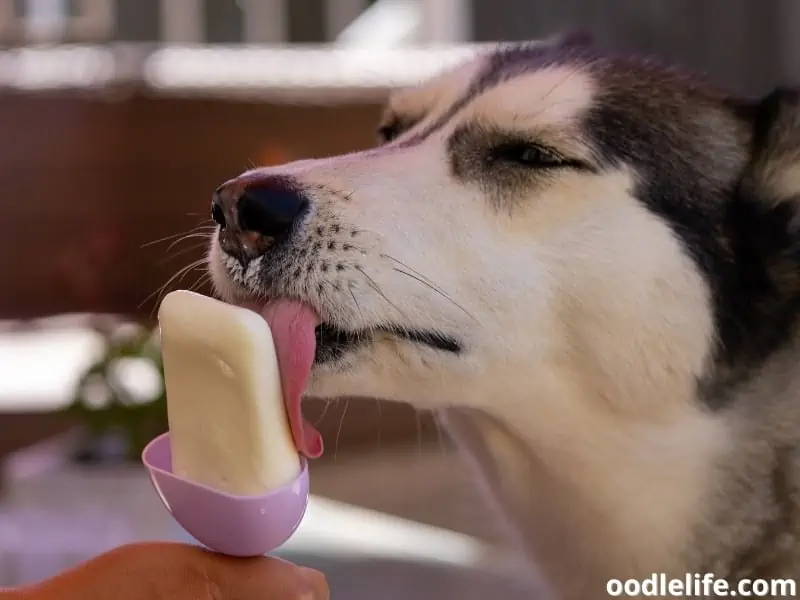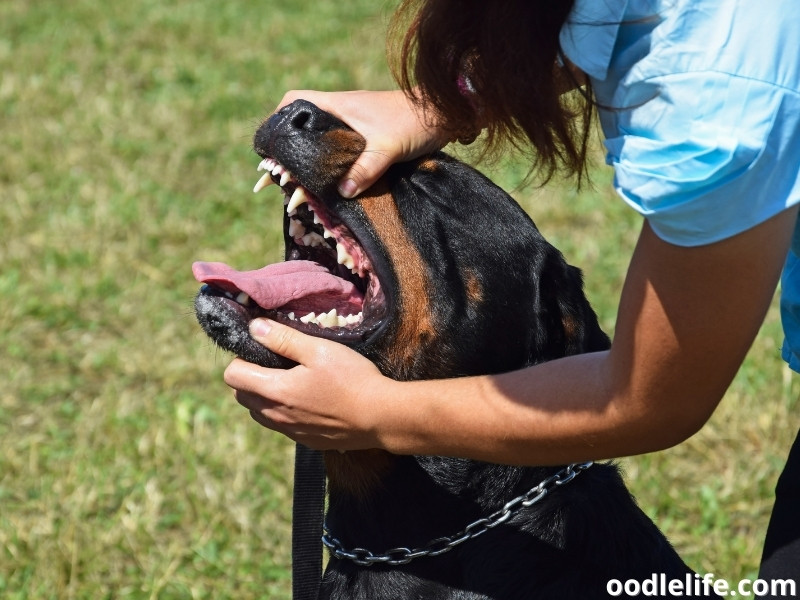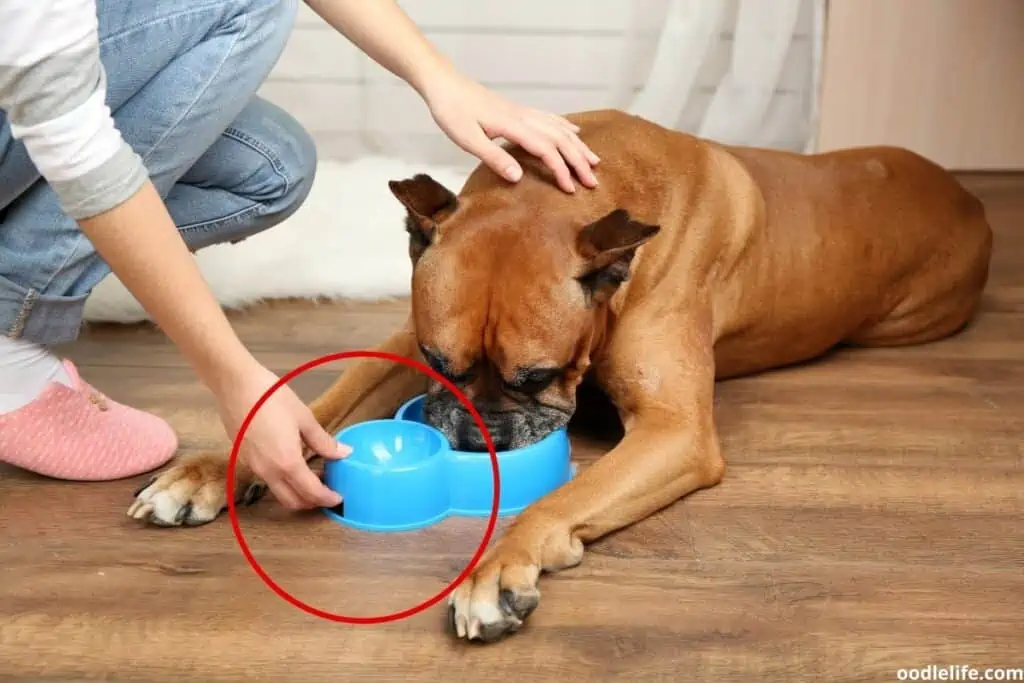Can Dogs Get Brain Freeze? [Explained]
It’s a hot summer day, and your eyes are darting between your dog and vanilla ice cream cone. You know that vanilla won’t hurt them, unlike chocolate. But then you think back to your childhood when you’d gulp down an ice cream cone and have searing pain from brain freeze.
So, can dogs get brain freeze? The verdict is still out on whether dogs can get brain freeze. But dogs have trigeminal nerves like humans, which is the route the brain freeze pain signals take.

I’ll give you more background on how brain freeze works, what your dog might look like if they’re experiencing brain freeze, and strategies for keeping them cool in the summer.
The Science Behind Brain Freezes
Brain freezes go by many names, including ice cream headaches and cold stimulus headaches. But the scientific term for brain freeze is sphenopalatine ganglioneuralgia.
As nearly everyone has experienced, brain freeze occurs from eating something too cold too quickly. However, to initiate a brain freeze, something cold must touch the upper palate of the mouth.
Researchers still need to do more investigating before coming to a conclusion they agree on about why brain freezes happen. However, a leading theory is that the palate’s blood vessels in the roof of the mouth constrict too quickly, causing nerve pain.
The roof of the mouth contains many sensitive nerves. That coupled with fast temperature changes between your body temperature and cold food or a drink sparks vasoconstriction, the narrowing of blood vessels.
By using the trigeminal nerve, pain signals move through the body, particularly in the forehead area, where these nerves are abundant.
Therefore, to relieve the pain from brain freezes, the nerves must have a warm stimulus to widen the blood vessels; even air will do the trick for helping to warm up the mouth.
The good news is that if your dog has a brain freeze and is anything like humans, studies show that there’s a high chance the brain freeze will last for under 10 seconds.

Signs That Your Dog Might Have Brain Freeze
Although there’s no scientific proof that dogs get brain breezes, given that dogs have roof palates with blood vessels and trigeminal nerves, it stands to reason it can happen.
So, if you give them a cold treat or fill their water bowl with ice cubes and notice that they display odd behaviors immediately after consumption, there’s a good chance they’re experiencing a brain freeze.
Some possible signs of brain freeze in dogs include:
- Disorientation
- They stop moving.
- Possible swaying
If these symptoms are temporary, lasting a matter of seconds, it should be safe to assume that Fido had a brain freeze. But if your dog shows prolonged strange behavior after eating something cold, you should take them to the vet.

How To Help Your Dog Overcome Brain Freeze?
If you watched your dog gulp down something cold and act oddly immediately afterward, brain freeze might be the culprit. In that case, you can help them overcome it faster by encouraging them to drink lukewarm to warm water.
If that doesn’t work, you can try a more hands-on approach. But to be fair, these are strategies best suited for humans—by the time you get around to helping your dog, their brain freeze likely will already be over.
Nevertheless, two strategies that are effective for humans that you can try on your dog include:
- Cupping your hand over their mouth and nose.
- Rubbing the roof of their mouth.
The goal in both cases is to help your dog’s palate warm up so that the blood vessels widen.

Health Issues That Aren’t Brain Freeze
If you’re wondering, “Can dogs get brain freeze, or is my dog suffering from another condition?” it’s hard to know unless you bring them to the vet.
That said, one of the tell-tale signs of brain freeze is that it passes quickly, usually in less than 10 seconds. But if your dog shows prolonged symptoms, a more significant health issue may be at play.
Lethargy, imbalance, and even difficulty walking from a condition like arthritis may all look like a reaction to brain freeze on the surface when there’s really a deeper issue.
You know your dog best. So, if you suspect their behavior is off, I encourage you to take them to the vet.

The Best Way To Give Cold Treats to Your Dog
Just because your dog might experience brain freeze doesn’t mean you can’t give them a cold treat on a hot day.
So, the rule of thumb is if you’re giving them cold food, do so in small pieces. That way, you prevent your dog from gulping down too much cold too quickly, sparking nerve pain radiating from their palate.
Alternatively, I’m not about to stop you if you want to cool down their water with ice cubes. Doing so is especially beneficial for outdoor dog bowls to prevent the water from becoming too warm.
However, ration the number of ice cubes you put in your dog’s water bowl.
There’s no need to pack it to the brim; a handful of ice cubes bobbing in the water should keep the water cool enough without raising the temperature too much to spark a brain freeze.
As a word of caution, it’s best not to feed your dog ice cream—brain freeze aside. That’s because many dogs have lactose intolerance, some types of ice cream may contain toxic flavors, and the fat and sugar can lead to obesity and other health issues.
The good news is that there are dog-safe ice creams so your pooch can join in on summertime fun. Many grocery stores sell dog-friendly ice cream in the frozen section.

Tips for Keeping Your Dog Cool in Hot Weather
There are many strategies you can implement for helping your dog stay cool when it’s hot outside without risking them getting a brain freeze. Some of the best ways include:
- Ensuring they have access to shade.
- Not exercising them too much.
- Purchase a cooling bed.
- Freeze or refrigerate a toy.
- Offer them small frozen treats.
If you have the space, it’s also a nice idea to provide a small kid’s swimming pool for your dog, preferably in the shade. That way, they can go in and cool down whenever the feeling strikes.
Dogs don’t sweat through their skin like humans, except for their paw pads on occasion. Instead, dogs thermoregulate through panting. Air passing over their tongue and throat creates a sensation similar to how a breeze feels on our sweaty skin.
For this reason, you should never put a muzzle on your dog in hot weather unless it’s for safety reasons. And even then, it should be for a brief period.

The Bottom Line
So, can dogs get brain freeze? There’s no evidence showing that dogs can get brain freeze, but it seems possible based on the shared biology that humans and dogs have for the factors that spark a brain freeze.
If your dog displays odd behavior nearly instantly after eating something cold and recovers within 10 seconds or so after, it’s safe to assume they had a brain freeze. Otherwise, if they show prolonged symptoms of acting strangely after eating something cold, I recommend taking them to the vet for peace of mind.